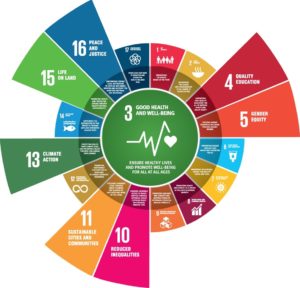By Charlie Foster, Trevor Shilton, Lucy Westerman, Justin Varney, and Fiona Bull
More people moving more is central to a healthier world. Unfortunately, evidence tells us that people everywhere are less active than ever before, and the burden of chronic noncommunicable diseases rises unabated.
In response, the WHO has launched their strategy to develop a new Global Action Plan to Promote Physical Activity.
Years of advocacy have culminated in this unique opportunity; the development and comprehensive implementation of a global action plan to promote physical activity. This in many ways, will shape the future.
Why is WHO suddenly talking about physical activity?
WHO has encouraged member state governments to promote physical activity for over a decade. Since the 2004 WHO Global Strategy on Diet, Physical Activity and Health, and inclusion of physical activity as a key risk factor and opportunity in the 2013 Global Action Plan on NCDs, the International Society for Physical Activity and Health (ISPAH) has been a lead advocate to promote physical activity. Its numerous resources, including a policy framework (the Toronto Charter, 2010) and policy investment decision tool (What Works: The Seven Best Investments for Physical Activity, 2011) guide countries with the rationale and operational choices for physical activity promotion.
What’s helped get physical activity on the global agenda?
Recent progress toward a Global Action Plan to Promote Physical Activity comes thanks to the tireless work of various key individuals and organisations. This includes ThaiHealth. ISPAH, in partnership with the BJSM. These organizations, along with others, are leading the push for greater recognition of physical activity as a key component of health, and social and sustainable development. An inactive world is unhealthier, uneconomic and unsustainable.
Broader policy priorities have emerged highlighting the pivotal role of physical activity in: (i) achieving the Sustainable Development Goals (SDGs), (ii) making the Global Action Plan to Promote Physical Activity a catalytic opportunity across multiple sectors, and (iii) providing a framework for a truly embedded whole system approach to moving nations. The NCD Alliance, ISPAH and partners will mobilize civil society advocates from across sectors to contribute to the development of a strong Global Action Plan, to call for renewed commitment from governments to boost physical activity, and to enhance the feasibility, sustainability and accountability of its implementation.
How will the Bangkok Declaration on Physical Activity and Health help?

The BKKD will help more people from more sectors engage in elevating physical activity as a local, national and global priority. It:
- advocates for investment and actions at country, regional and global levels
- provides a case for partnerships with sectors inside and outside of health
- details six actions which could advance progress toward achieving WHO targets of increasing physical activity and reducing NCD burden by 2025
- contributes to mitigating climate change, reducing inequalities and supporting more sustainable cities and communities in a rapidly urbanising world.
Use the BKKD in your practice, teachings and advocacy, share it far and wide. Get it at http://www.ispah.org/resources.
The more engaged we all are, the better the ultimate health of our planet.
Competing Interests
All authors were involved in developing and promoting the BKKD
Further Reading
- International Society for Physical Activity and Health. The Bangkok Declaration on Physical Activity for Global Health and Sustainable Development. Bangkok: ISPAH; 2017 [cited 2017 May 14]. Available from: http://www.ispah.org/resources
- Bull F, Gauvin L, Bauman A, Shilton T, Kohl H, Salmon A. The Toronto Charter for Physical Activity: a global call for action. 2010;7(4):421-2.
- Global Advocacy for Physical Activity (GAPA) the Advocacy Council of the International Society for Physical Activity and Health (ISPAH). NCD Prevention: Investments that Work for Physical Activity. Br J Sports Med2012;46:709–712
Figure 1 Actions on physical activity can contribute to achieving eight of the sustainable development goals
Authors: Charlie Foster1 Trevor Shilton2 Lucy Westerman3 Justin Varney4 Fiona Bull5
- Nuffield Department of Population Health, University of Oxford, UK & President of International Society of Physical Activity and Health (2016-2018), www.org
- National Heart Foundation, Perth, Western Australia, Australia & Global Advocacy for Physical Activity (GAPA), globalpa.org.uk
- NCD Alliance, Geneva, Switzerland, www.org
- Healthy People Division, Public Health England, UK,
- Prevention of Noncommunicable Diseases and Mental Health, World Health Organisation, Geneva, Switzerland, Past President of ISPAH (2014-2016) who.int